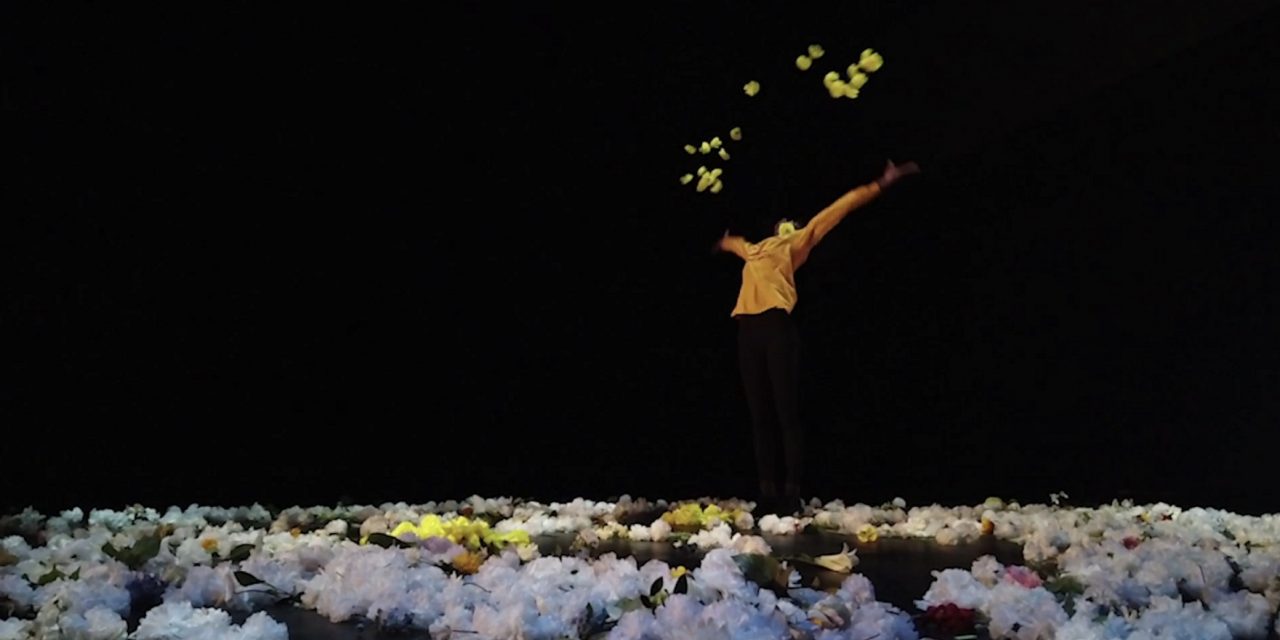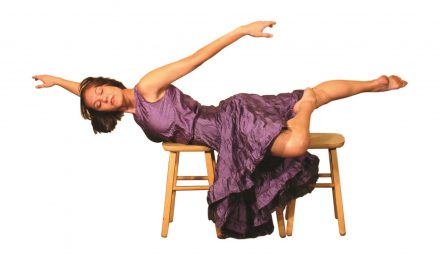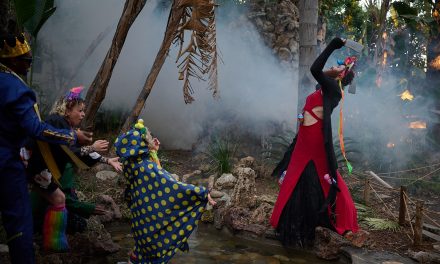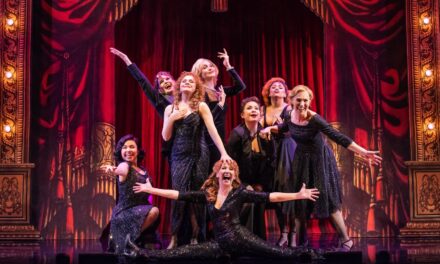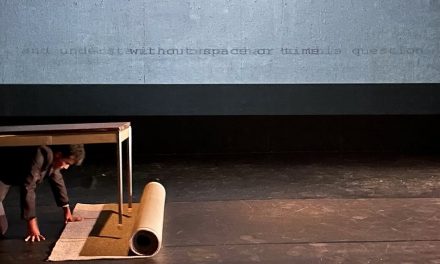Established in 1965, the University of California, Irvine (UCI) Claire Trevor School of the Arts incorporates Art, Dance, Drama and Music, and on February 25 – 27, 2021 the UCI Department of Dance presented virtually Dance Visions 2021. The program included works by professors Lindsay Gilmour, Chad Michael Hall, Ariyan Johnson, Vitor Luiz, Molly Lynch (Chair), Lisa Naugle, S. Ama Wray in collaboration with composer Alan Terricciano, and Distinguished Professor and internationally known choreographer Lar Lubovitch.
While we have a policy not to review the performances of students, I was interested to see how the Department was creatively coping with the Covid pandemic. For the past year I have been viewing and reviewing dance made for camera, as well as for Zoom. Needless to say, we are all aching to get back into the theater to see in-person performances and to feel firsthand the energy emitting from the stage.
Overall, I was impressed with the quality of the camerawork and editing of the works presented for Dance Visions 2021, and it was wonderful to see that young dancers are not only able to keep their physical dance training moving forward, but they are also experiencing and becoming educated with a medium that perhaps they might not have during normal times. It is certain that these new creative tools will stay with many of them throughout their years ahead. This process is repeating itself throughout the arts and may forever alter how art is created, presented, and perceived.
First on the program was Inside/Out, choreography by Molly Lynch in collaboration with the dancers. Like many online dance works available right now, each dancer performed in the privacy of their home or apartment, using furniture, window sills and shutters, a fireplace mantle and even a piano as set, props and supporting partners. They were also the filmographers and costumers. Lynch featured one dancer as the neighbor voyeur, keeping track of those around her while trying not to be seen observing them. The majority, if not all, of the ten dancers were on pointe and Lynch’s choreography to music by Daniel Manoiu was lyrical and clearly designed for the space available.
The all-female cast of Inside/Out was Karli Padilla, Albany Adele, Lauren Evans, Jayne Friscia, Natalie Hannah, Claire Kucera, Mia Marino, Crista McClain, Emma Mertens, and Hayden Villandre. The video editors were Katherine Wong in consultation with Molly Lynch.
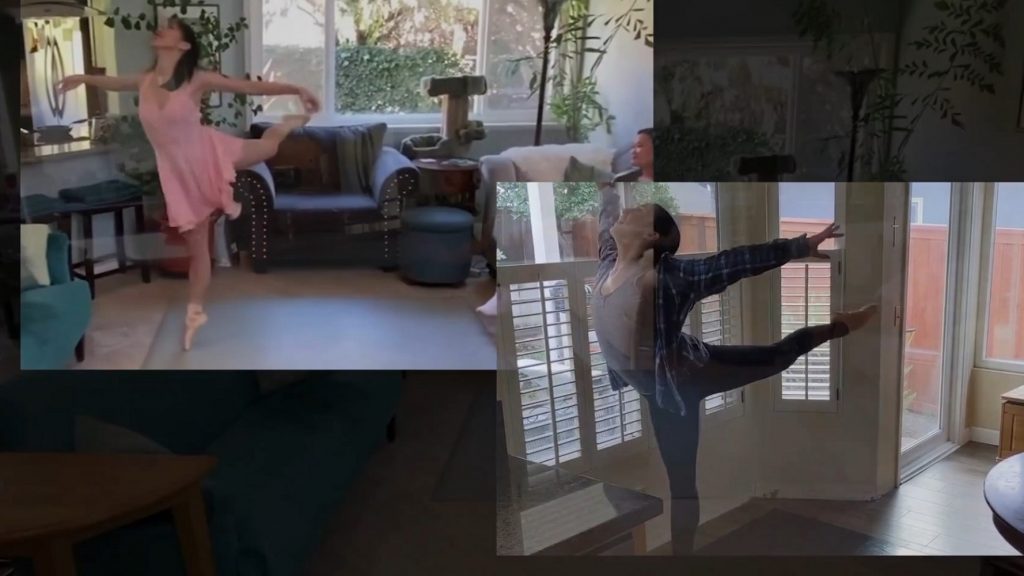
Dance Visions 2021 – “Inside/Out” Choreography by Molly Lynch – Photo courtesy of UCI Department of Dance
Parallel Worlds was choreographed by Lisa Naugle in collaboration with dancers Natalie Aronno, Ashley Onks, Paloma Perez-Rojas, Marc Spaulding, and Marco Vega. Filmed primarily outdoors, we first saw someone running and heard heavy breathing. It is unclear at first whether it was a man or a woman, or if this person was in trouble, but finally a young woman is seen slowing down. The five dancers contemporary dances’ styles were infused with pedestrian movements and actions. They perform in fields, athletic arenas, parks and a man is seen several times walking through a snow covered neighborhood. He was not one of the dancers, but one of actors whose conversation is heard throughout the film.
The individual worlds were, of course, similar to the involuntary isolation forced upon the majority of us during this pandemic. Naugle does unite the group at the end with each dancer having a solo moment dancing with the same chair in the same field, but alone.
The Composer for Parallel Worlds was Ricardo Santoboni; the voices were those of Mariangela Montenero and James Murray; the Costume Designer was Julie Keen-Leavenworth in collaboration with the dancers; and the Editors were Leandro Glory Damasco in consultation with Lisa Naugle. For this version, the conversation titled “The Listener and The Speaker” was written by Lisa Naugle.
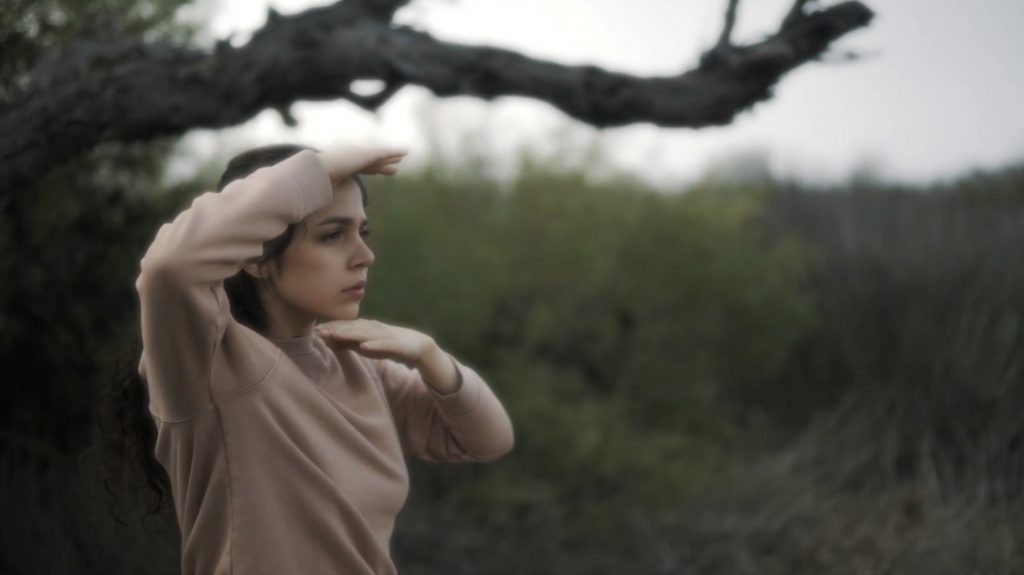
Dance Visions 2021 – “Parallel Worlds” Choreography by Lisa Naugle – Photo courtesy of UCI Department of Dance
An all-white, extremely small and enclosed space was the set for Safe Room choreographed by Chad Michael Hall in collaboration with the dancers. After a year of isolation, it is a space that felt all too familiar. The movement inspired those same feelings of confinement, frustration, depression, and the waiting – waiting for all this to end. The score by Ivan Shopov and projections by Hall aided to enhance ones feeling of going mad. There was a figure in all black that would occasionally appear, and I got the sense that this represented the virus that the “safe room” was protecting everyone from. Near the end, however, a dancer puts on the all-black clothing and it became the outer protection; an abstract protective face mask that is now part of everyone’s daily clothing.
The stark, but beautiful lighting was by Merle DeWitt III; costumes by Julie Keen-Leavenworth and video editing was by Hall. The cast of Safe Room were Veronica Allen, Natalia Chambers, Karalyn Doolaege, Claire Goldes, Savannah Graves, Zachary Medina, Ari Pine, Sophia Vangelatos, and Michaela Wong.
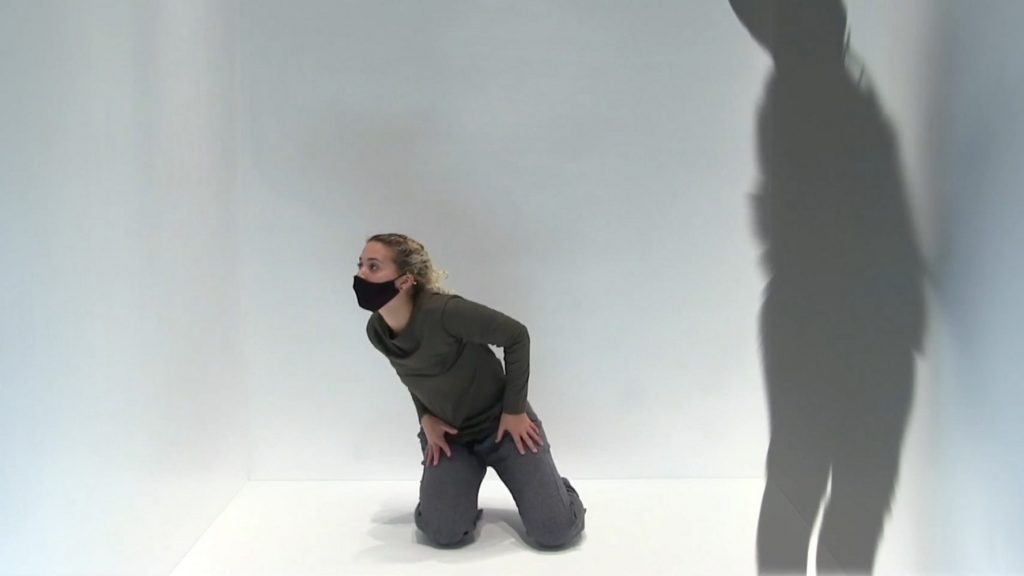
Dance Visions 2021 – “Safe Room” Choreography by Chad Michael Hall – Photo courtesy of UCI Department of Dance
The beautiful west coast beach was the venue and its skies were the backdrop for Lindsay Gilmour’s weight of the moon on earth, performed by Aliya Kerimujiang. Gorgeous takes of ocean plant life swirling just beneath the surface of the ocean were woven between scenes of Kerimujiang moving on the beach, digging her fingers through sand or lying still with a long stream of seaweed and kelp trailing from her head like hair.
This work took on a couple of symbolic meanings for me. One was how the moon is said to affect women’s menstrual cycle in the same manner it does the oceans’ tides. The second idea I came away with was, without always acknowledging it, how much we all depend on the ocean. Kerimujiang’s trail of hair becomes a wavy line of bunched up kelp and seaweed as she spins like a whirling dervish out into the ocean.
The music for weight of the moon on earth was by Chris Seeds; Filmographer was Nathan Whitmont; and Video Editors were Whitmont and Gilmour.
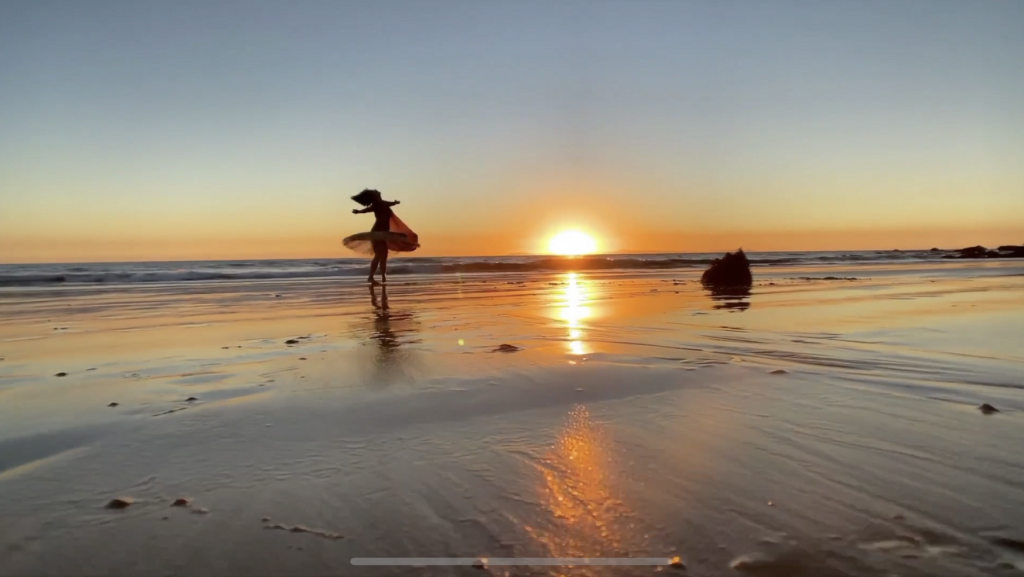
Dance Visions 2021 – “weight of the moon on earth” Choreography by Lindsay Gilmour – Photo courtesy of UCI Department of Dance
The mood shifted to become grounded in reality with Triggered, choreographed by Ariyan Johnson and performed by Kyla Chaney, Kendal Curtis, Emily James, Violeta Lemoh, Anna Medina, Naomi Sagen, Eleanor Simmons, Cierra Torres, and Janelah Villanueva. The performers were first seen walking in separate neighborhoods as they texted on their cell phones. One by one, each is triggered by some unseen but similar event causing them to drop their phones and begin moving through current situations and emotions sparked by the Black Lives Matter Movement and racial and social injustice. Lyricism gives way to Hip Hop, break dancing and more of a street dance scene. Beautiful beaches and parks are replaced with empty playgrounds and streets.
Without violence or malice, Johnson created a dreamlike fantasy to shift everyone from wishful dreams back into a harsh reality. The fantasy ends and the although the performers return to using their cell phones, they are forever altered.
The music for Triggered was by Calvin Gaines and Roland Clark; Filmographer and Editor was Frances DeLoach; and the Lighting Designer was Nita Mendoza.
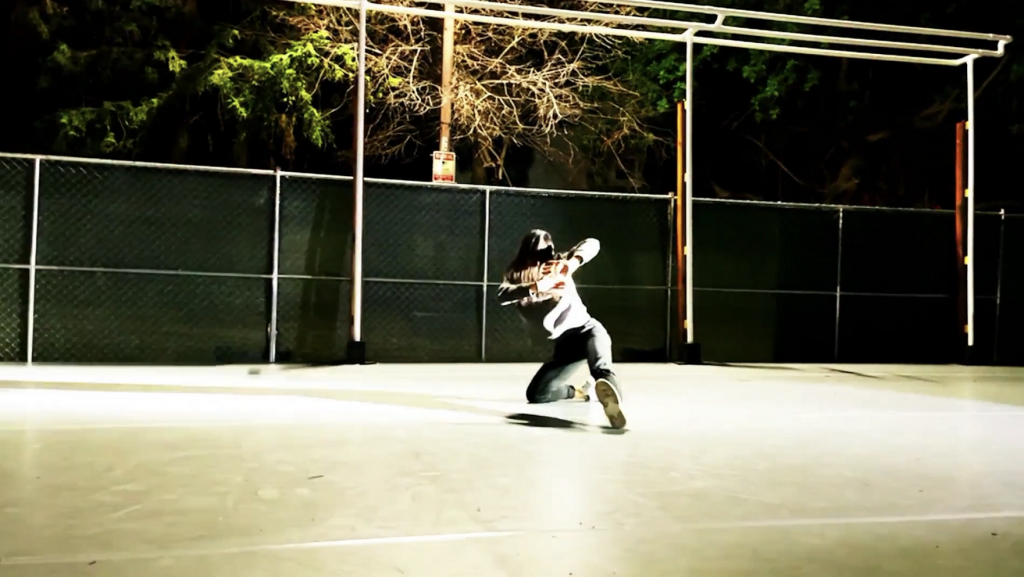
Dance Visions 2021 – “Triggered” Choreography by Ariyan Johnson – Photo courtesy of UCI Department of Dance
The program continued with the whimsical Harmonically Ü choreographed by Vitor Luiz to music by Oliver Davis. Dancers on pointe, wearing ballet slippers and barefoot performed ballet, contemporary/lyrical dance and jazz through various outdoor arenas. The theme was celebratory and filled with the joy of moving – moving outside, away from the confines of our homes. Purely movement based, the story to this work was dance and to let dance help put a smile on your face.
The cast of Harmonically Ü were Nicolina Arellano, Huiyi Bao, Audrey Burton, Sergio Camacho, Amy Doan, Lauren Duran, Quinn Francis, Natali Gomes, Isabella Granqvist, Nancy Griswell, Sena Hernandez, Maya Holbrook, Anna Holzinger, Emily McKeon, and Makena Rush. The Filmographer was Vitor Luiz in collaboration with the dancers and the Editor was Vitor Luiz.
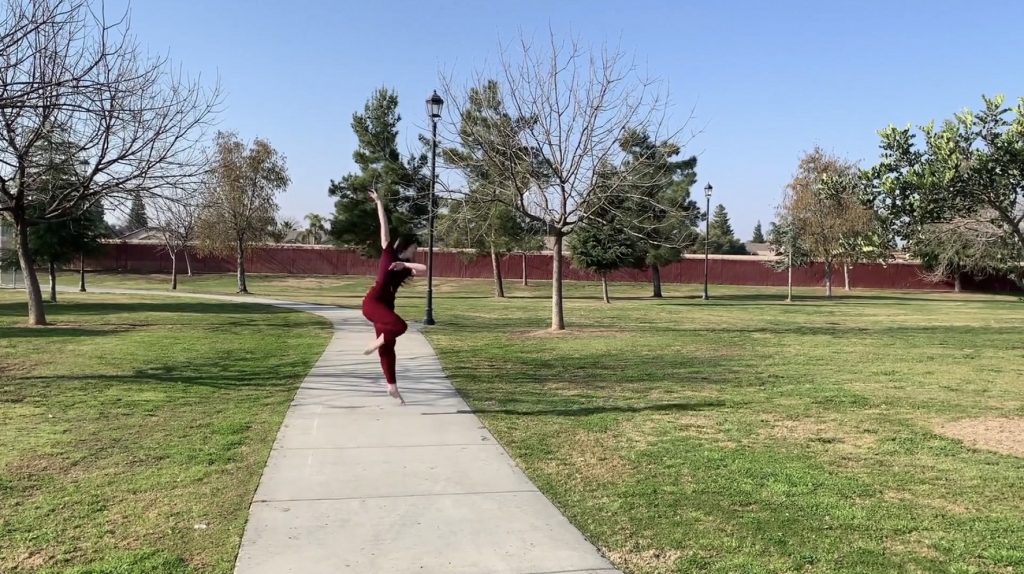
Dance Visions 2021 – “Harmonically Ü” – Choreography by Vitor Luiz – Photo courtesy of UCI Department of Dance
I have been a long time admirer of musician and composer Alan Terricciano, and in full disclosure, he has composed music for several of my dance works, played for some of my technique classes and we worked together at the American Dance Festival in Durham, NC for several summers. It is understandable why a choreographer would want to choreograph to Terricciano’s sublime “Voice in the Quiet Cathedral” performed by organist, David L. Ball, but in Moving Benedictions, the choreography did not rise to the quality of Terricciano’s music, and the work was far too long for this venue.
One or two of the sections rose to the definition of the word benediction: “the utterance or bestowing of a blessing, especially at the end of a religious service” or “devout or formal invocation of blessedness” and the dancers certainly deserve kudos for their work, but perhaps S. Ama Wray, the choreographer, would have been best to have chosen another of Terricciano’s compositions or asked to choreograph to only a few of the movements of this music.
The cast of Moving Benedictions were Hannah Albin, Beverly Bautista, Cara Laughlin, Frey Starks, and Katie Walsh. The Video Editor was Alan Terricciano and costumes were by Julie Keen-Leavenworth.
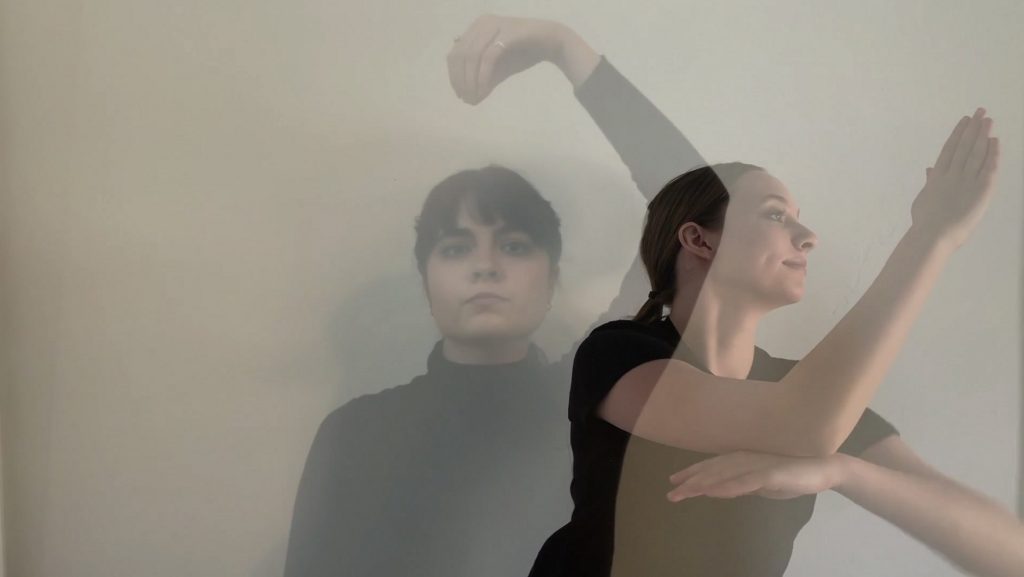
Dance Visions 2021 – “Moving Benedictions” Choreography by S. Ama Wray – Photo courtesy of UCI Department of Dance
Lar Lubovitch is an American choreographer who founded the Lar Lubovitch Dance Company in 1968, a company that receive critical acclaim in the U.S. and abroad. His works are included in the repertories of companies throughout the world, including the New York City Ballet, American Ballet Theatre, Paris Opera Ballet, Royal Danish Ballet, Stuttgart Ballet, Alvin Ailey American Dance Theater, Baryshnikov’s White Oak Dance Project and Netherlands Dance Theater.
For Dance Visions, Lubovitch presented his beautiful solo work Scriabin Dances which premiered in 1978. The work is described as three studies to the music of Russian composer Aleksandre Scriabin and Lubovitch’s choreography was as gorgeous as Scriabin’s music. Performed here by the statuesque Katherine Lingle in a black sleeveless dress, the three sections moved through reflective, romantic lyricism and fast expansive movements. Lubovitch visualized Scriabin lush, full and rich music, but he did more – he equaled its artistry. The music supported the dance and the dance enhanced the music. It was a joy to watch.
The Video Editors for Scriabin Dances were Leandro Glory Damasco in consultation with Lar Lubovitch. The atmospheric lighting was by Nita Mendoza, and the Costume Designer was Reid Bartelme.
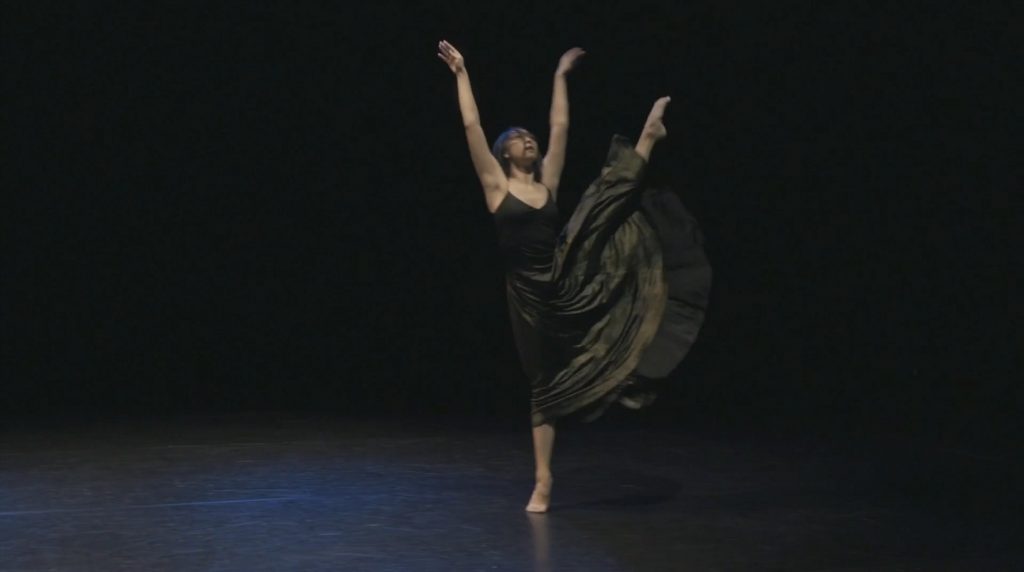
Dance Visions 2021 – “Scriabin Dances” (1978) Choreography by Lar Lubovitch – Photo courtesy of UCI Department of Dance
It was inspiring to see how dance is continuing to thrive within the academic setting. I am certain that this same professionalism is occurring many of the dance departments and art colleges throughout the country.
To learn more about the UCI Claire Trevor School of Art, click HERE.
To visit the UCI Department of Dance website, click HERE.
Written by Jeff Slayton for LA Dance Chronicle.
Featured image: Dance Visions 2021 – Triggered Choreography by Ariyan Johnson – Photo courtesy of UCI Department of Dance.

